Bournemouth clifftop goat herd set to double
- Published
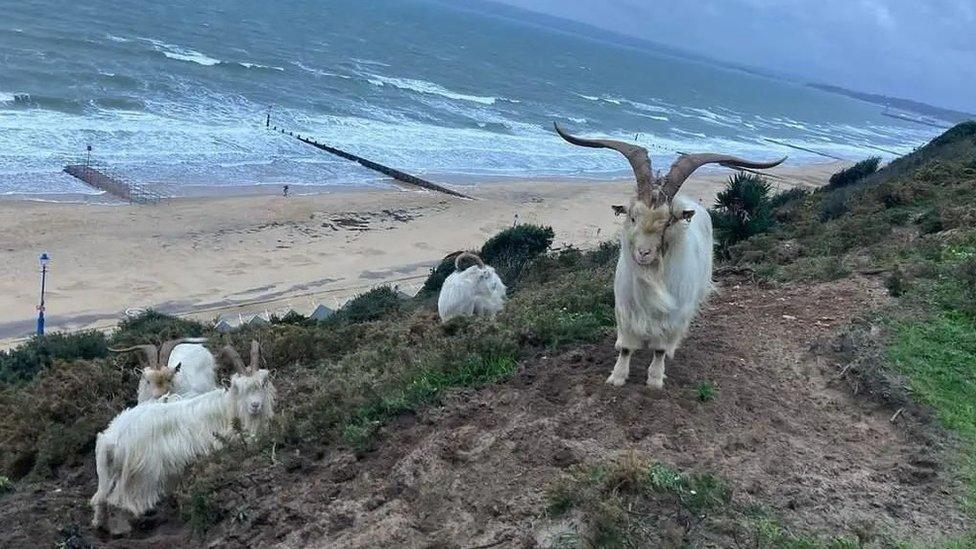
The herd of 50 goats graze 11 different areas along the cliffs in Bournemouth
A herd of 50 goats that graze steep cliffs of a seaside resort is set to double in size.
Ten goats were first brought in as an alternative to manage the vast area of cliffside vegetation in Bournemouth by Bournemouth, Christchurch and Poole Council in 2009.
Now a breeding project is under way to expand the herd to 100 to graze the area between West Cliff to Southbourne.
Funding has come from a government agreement with Natural England.
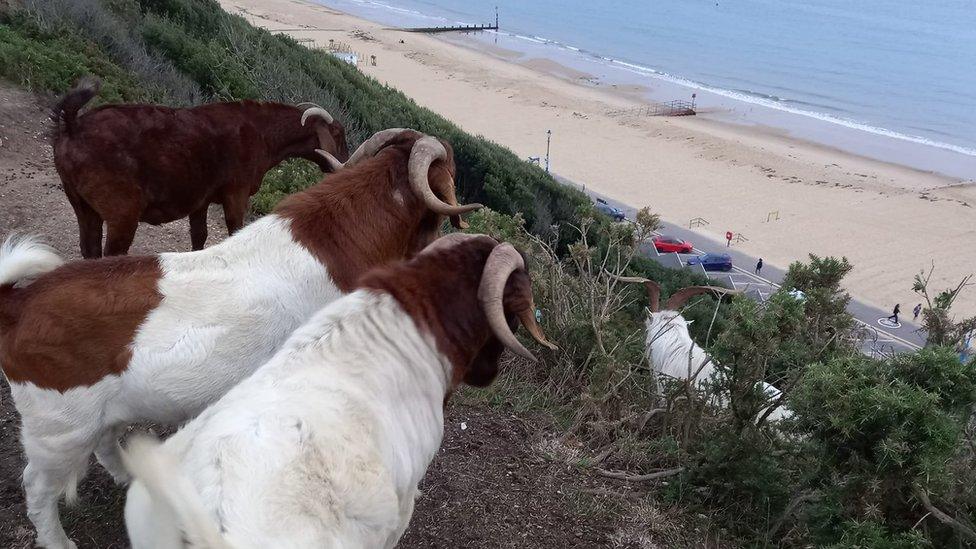
The goats have become something of a tourist attraction and even have their own social media accounts
The council and volunteer grazier, Mark Jackson, look after the herd, which includes several different breeds - Kashmir, Boer a South African breed, and feral goats.
He said: "Yes it's a lot of goats but with the amount of grazing they've got to do it's a fair number - we're going to breed at a nice slow steady pace."
The mums-to-be are taken off the clifftop about a month before they are due to birth and taken to a nearby small holding.
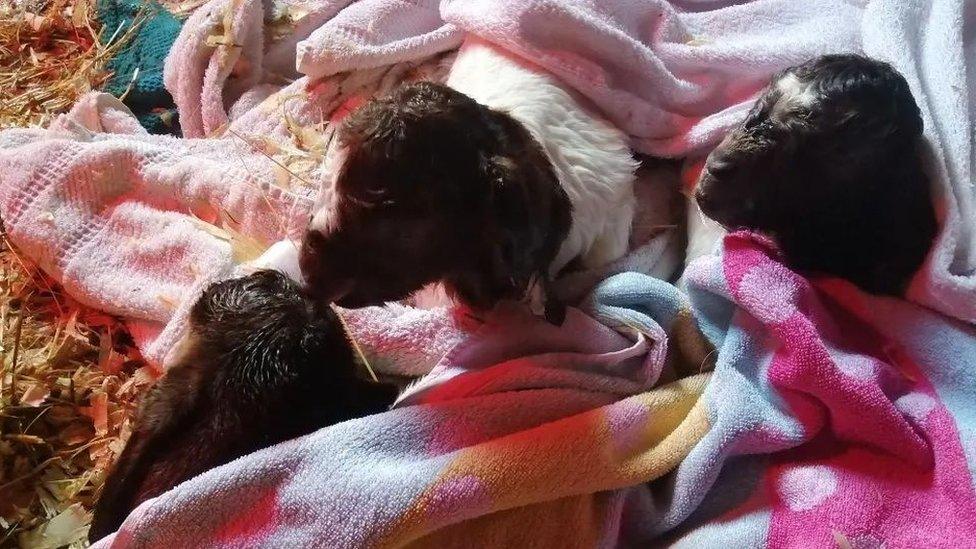
Folly the goat has recently given birth to triplets at the small holding
Tom Bennet, council ranger, said: "It's moved away from people just wanting to come to the coast and and see the amazing beaches and views.
"The goats are now a real tourist attraction in this area, which is really good."
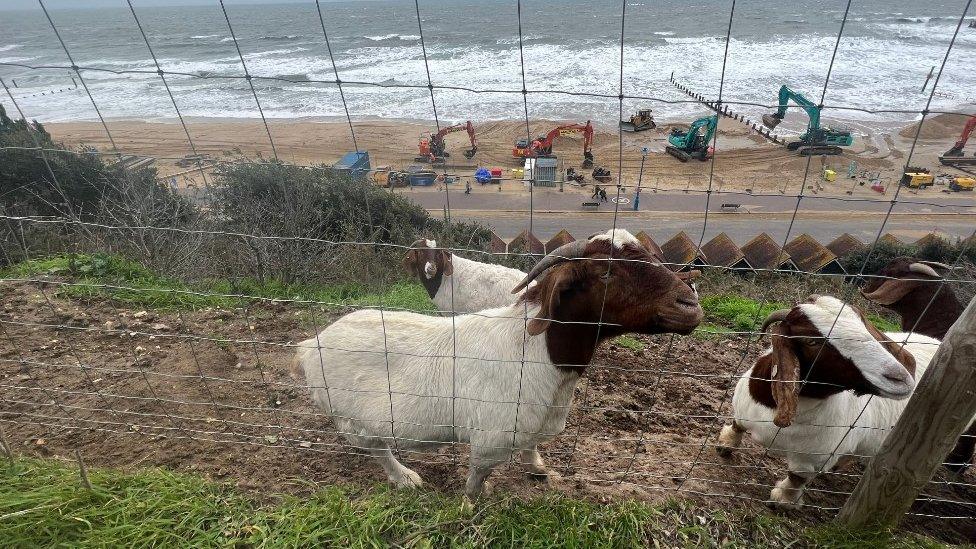
Council ranger Tom Bennet said "the locals love them and they are a really good tourist attraction"
The herd live on a seven-mile (11km) stretch of cliffs year-round including during the resort's annual four-day air show.
Mr Bennet said: "They've been used to it for several years now, but Mark and some extra volunteers come and keep an eye on them during the air show."
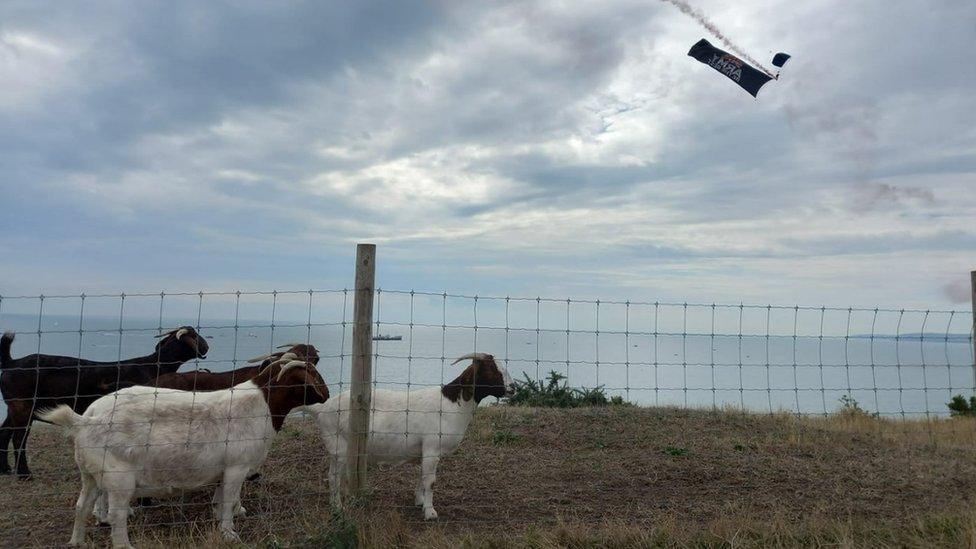
Extra checks are carried out on the herd during the seaside resort's four-day annual air show
The goats are placed in groups to graze within 11 two or three hectare fenced off areas.
"The goats are doing a really good job for us, managing vegetation that's almost impossible to do by hand," Mr Bennett said.
"Without the goats, we really struggled to look after this area."
This year's new arrivals are expected to join the herd on the cliffs in the spring.

Follow BBC South on Facebook, external, Twitter, external, or Instagram, external. Send your story ideas to south.newsonline@bbc.co.uk, external.